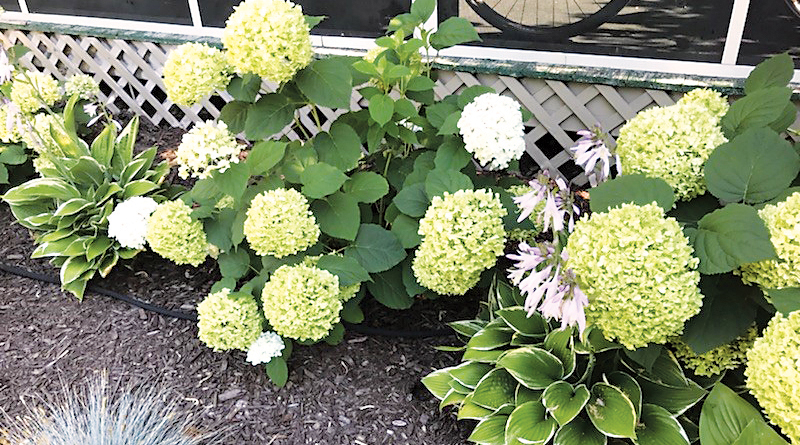THE SEASON OF HYDRANGEAS – Green-Thumb Gardener

Hydrangea arborescens: These are the beautiful snowball type. They bloom on new wood, so pruning should be done for shaping in winter or pre-spring.
Hydrangea paniculata: These blooms all start white and fade color to green or shades of pink or both. They also bloom on new wood and should be pruned if needed in winter or pre-spring.
Hydrangea macrophylla (Mophead): These are the types that bloom pink in alkaline soils and blue in acidic soils. Soil pH can be adjusted to try to achieve the color of bloom desired. They seem to bloom best when sited in 3-4 hours of sun but not much more. Some bloom only on old wood but newer types bloom somewhat on new wood also. Pruning on these types should only be done if necessary and types that bloom on new wood can be pruned in winter.
Hydrangea quercifolia (oakleaf): These hydrangeas have cone-shaped flower clusters and beautifully shaped leaves. They only bloom on old wood and are best if pruned only when absolutely necessary. Prune in late winter by removing entire stems if necessary.
Hydrangea anomala (climbing hydrangea): These are woody vines that produce blooms on old wood. They cling with air roots to structures and are a slow-growing, but large, heavy vine when mature. Pruning is best done in winter if necessary.
Keep in mind that there are many different cultivars of most of these types to achieve the proper size for your area. Don’t choose cultivars that are too large for your space and then keep trying to prune back to fit. You will likely be unhappy with the blooming results. Hydrangeas can be very dramatic in your landscape and enjoyed for years to come!
This article is sponsored by McNamara at Sand Point, which has 2 acres of production greenhouses, retail florist and gift shop, as well as retail garden center and wholesale plant business. Contact McNamara by calling 260-747-4131 or visit 4322 DeForest Ave, Ft. Wayne, IN 46809.
- Celebrating 20 Years Of Community At The Stand - April 12, 2024
- First Positive Case Of Chronic Wasting Disease In Indiana - April 12, 2024
- Southwest Allen County Schools Embark On Major Tree Plantings - April 12, 2024


